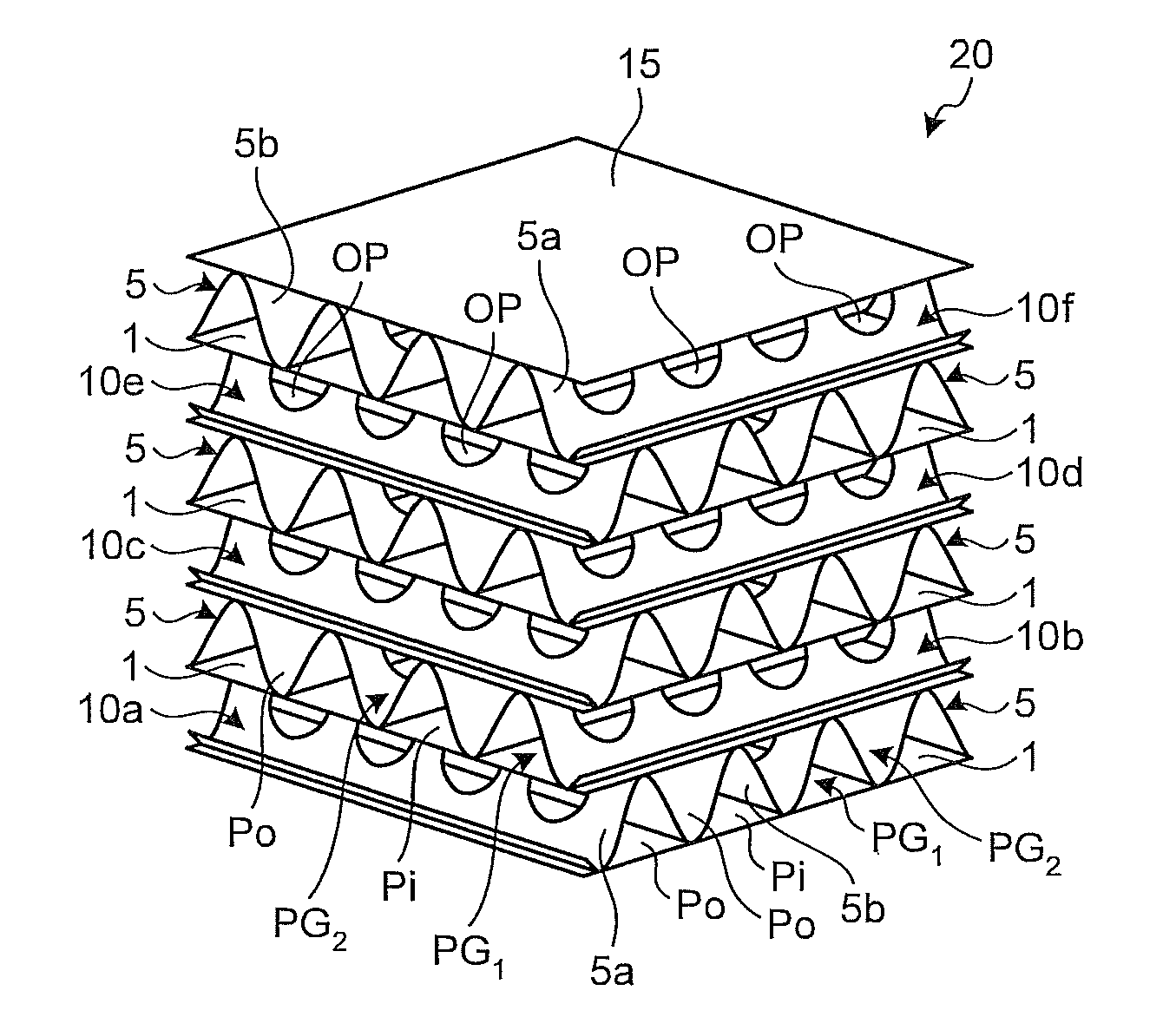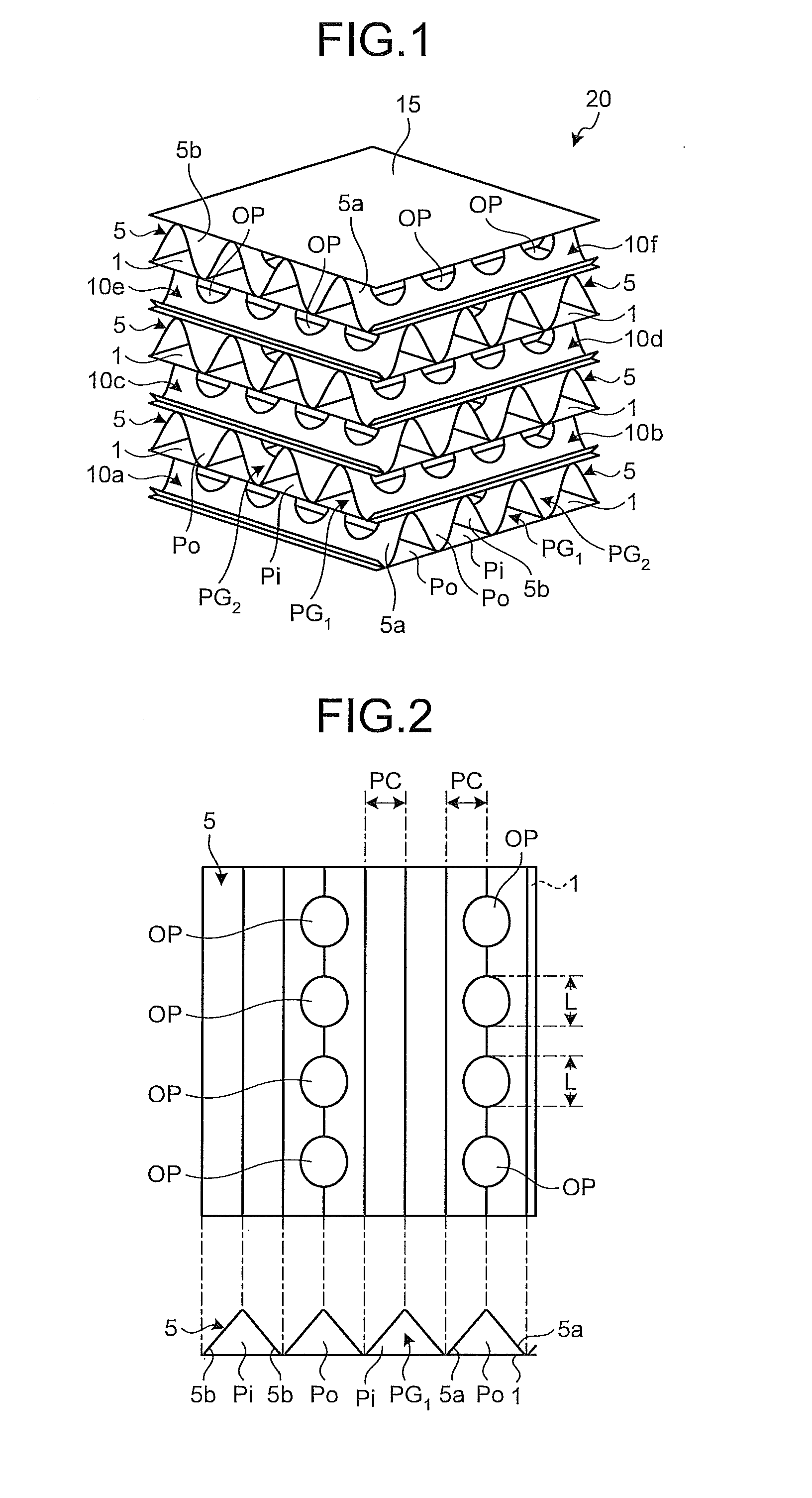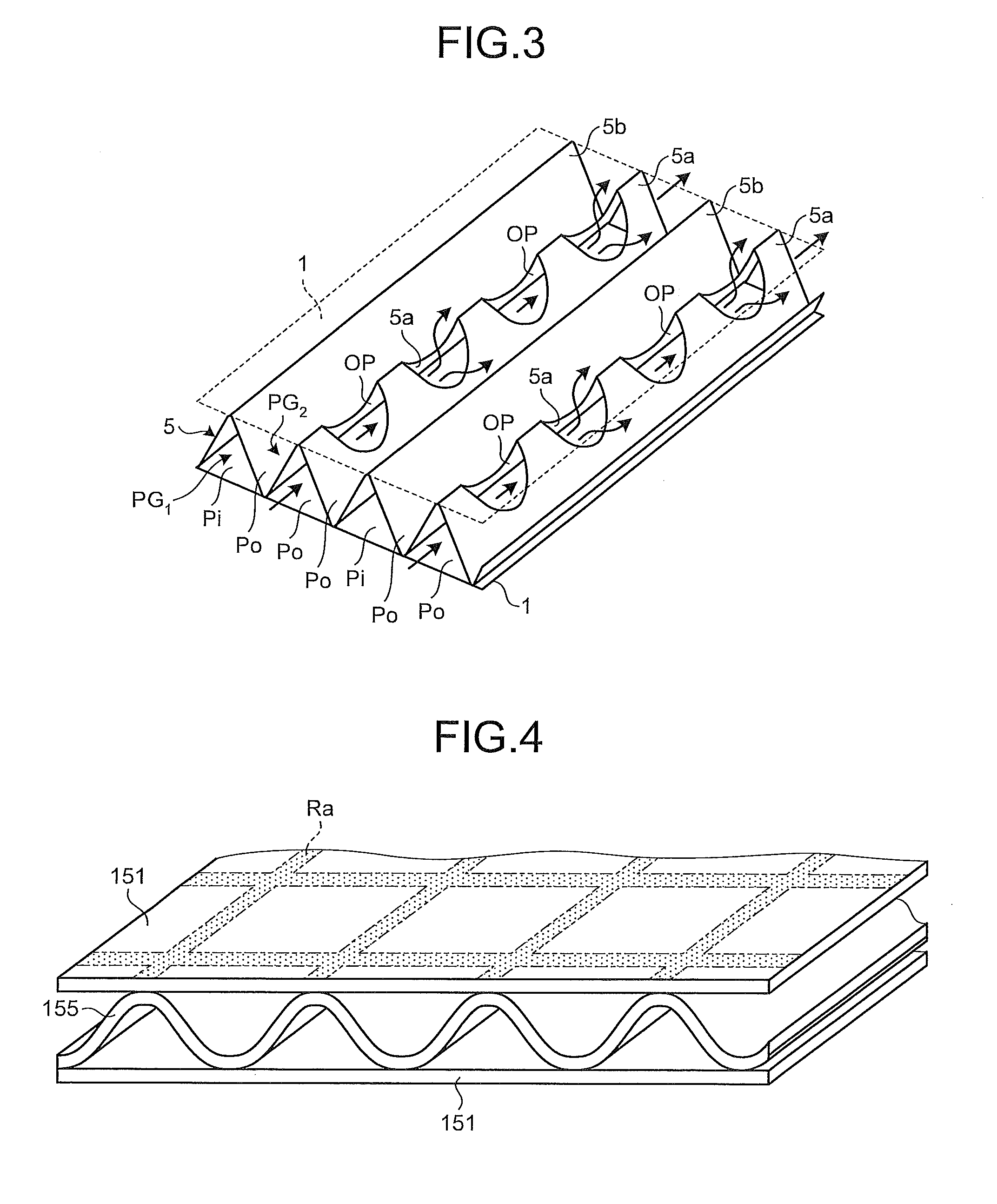Heat exchange element and manufacturing method thereof, heat exchanger, and heat exchange ventilator
- Summary
- Abstract
- Description
- Claims
- Application Information
AI Technical Summary
Benefits of technology
Problems solved by technology
Method used
Image
Examples
Example
First Embodiment
[0060]FIG. 1 is a schematic perspective view of a heat exchange element according to the present invention, FIG. 2 is a schematic diagram of a partition member and a spacing member joined on the partition member constituting a heat exchange element shown in FIG. 1, and FIG. 3 is a schematic perspective view of the spacing member and partition members joined on and under the spacing member constituting the heat exchange element shown in FIG. 1.
[0061]A heat exchange element 20 shown in FIG. 1 is of a cross-flow type having a stacked-layer structure in which sheet-like partition members 1 and corrugated spacing members 5 are alternately joined one another. According to the heat exchange element 20, the stacked-layer structure is formed by laminating six element-constituting units 10a to 10f. A top member 15 is further joined the uppermost element-constituting unit 10f. Each of the element-constituting units 10a to 10f is formed by bonding the spacing member 5 on the par...
Example
Second Embodiment
[0087]FIG. 9 is a schematic perspective view of one example of the heat exchanger. FIG. 10 is a schematic horizontal sectional view of the heat exchanger shown in FIG. 9. A heat exchanger 40 shown in the drawings includes a heat exchange element 20A and a box-like frame body 30 in which the heat exchange element 20A is accommodated.
[0088]The heat exchange element 20A has an identical structure as that of the heat exchange element 20 shown in FIG. 1 except that the number of corrugations in each spacing member and the number of element-constituting units are greater than those of the heat exchange element 20 shown in FIG. 1. Therefore, explanations thereof will be omitted.
[0089]The frame body 30 is a box-like member provided at its four sides with rectangular openings RO. The frame body 30 includes a top plate member 21 covering an upper surface of the heat exchange element 20A, a bottom plate member 23 covering a lower surface of the heat exchange element 20A, and f...
Example
Third Embodiment
[0094]FIG. 11 is a schematic vertical sectional view of one example of the heat exchange ventilator. FIG. 12 is a schematic horizontal sectional view of the heat exchange ventilator shown in FIG. 11. A heat exchange ventilator 70 shown in the drawings includes a casing 50, a heat exchanger 40A arranged in the casing 50, a supply air blower 51, an exhaust air blower 53, two filters 55a and 55b arranged in the casing 50, a lid 59 mounted on the casing 50, and a supply blower tube 61 and an exhaust blower tube 63 connected to the casing 50.
[0095]Two partition walls 41a and 41b are provided in the casing 50 to divide the casing 50 into two in its depth direction. These two partition walls 41a and 41b are separated from each other at a central portion of the casing 50. A supply ventilation passage 43 and an exhaust ventilation passage 45 intersecting with each other at the central portion of the casing 50 are defined in the casing 50 by the two partition walls 41a and 41b...
PUM
| Property | Measurement | Unit |
|---|---|---|
| Length | aaaaa | aaaaa |
| Flow rate | aaaaa | aaaaa |
| Width | aaaaa | aaaaa |
Abstract
Description
Claims
Application Information
 Login to view more
Login to view more - R&D Engineer
- R&D Manager
- IP Professional
- Industry Leading Data Capabilities
- Powerful AI technology
- Patent DNA Extraction
Browse by: Latest US Patents, China's latest patents, Technical Efficacy Thesaurus, Application Domain, Technology Topic.
© 2024 PatSnap. All rights reserved.Legal|Privacy policy|Modern Slavery Act Transparency Statement|Sitemap



